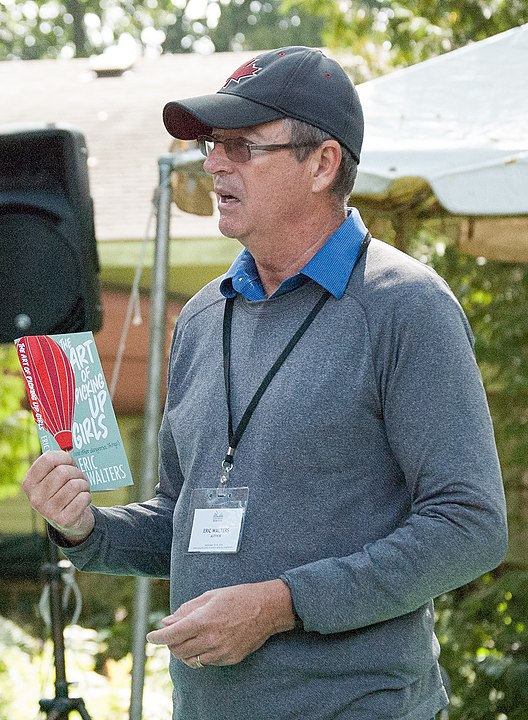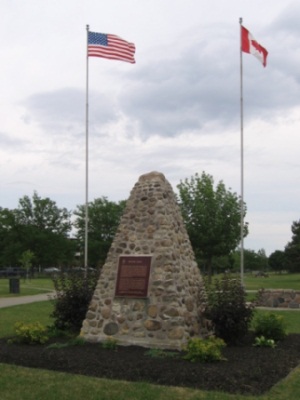
Background
Eric Walters was born in Toronto in 1957. He wrote his first novel, Stand Your Ground (1993), while teaching Grade 5 at Vista Heights Public School in Mississauga, Ontario. Disturbed by his students’ lack of interest in reading, he tried to engage them by writing a book that featured students from his class. A Member of the Order of Canada, Walters has published more than 100 books since 1993, making him Canada’s most prolific author.
Walters became interested in writing a book about the War of 1812 while teaching the subject to a Grade 7 class. “While I was reading a novel about the war to my students, they were falling asleep!” he said. “I couldn't believe something exciting hadn’t been written, so I wrote Bully Boys.” He was particularly interested in James FitzGibbon because of his role as a patriotic hero. Walters has called him “the single most important figure in our history.” He also dedicated the book to FitzGibbon, writing that “without him, there would not be a Canada.” Walters felt that the reputation of Canadian history as boring is unearned. He wanted to show young Canadians how interesting it really was so they could “aspire to greatness.”

James FitzGibbon and the Battle of Beaver Dams
Born in 1780 in Glin, County Limerick, Ireland, James FitzGibbon was a member of the 49th Regiment of Foot — the contemporary term for infantry. He was stationed in British North America in 1809. In the lead-up to the War of 1812, FitzGibbon’s intelligence and resourcefulness impressed his superior officers. Sir Isaac Brock helped him rise to the rank of lieutenant. After successfully commanding a company at the Battle of Stoney Creek, FitzGibbon was given the command of 50 men in a guerrilla campaign to halt marauding American soldiers. Dubbed the “Green Tigers” and the “Bloody Boys,” FitzGibbon and his men were so successful that the US Army sent nearly 500 men to try to stop them.
While the US Army marched toward FitzGibbon’s location at Beaver Dams, word of the impending attack reached Laura Secord. The young farm wife walked 30 km from her home in Queenston, crossing the American lines in secret, to warn FitzGibbon. FitzGibbon sent more than 300 Caughnawaga and 100 Mohawk warriors to ambush the Americans in what became the Battle of Beaver Dams. After three hours of fighting, FitzGibbon arrived with his men. He convinced the Americans to surrender by claiming there was a larger British force hiding nearby.
FitzGibbon became a war hero after the victory, which caused some controversy. Indigenous warriors pointed out that they did all the actual fighting. FitzGibbon agreed. In a letter to a fellow officer, FitzGibbon wrote that the Indigenous soldiers “beat the American detachment into a state of terror, and the only share I claim is the taking advantage of a favorable moment to offer them protection from the Tomahawk and the Scalping Knife.” FitzGibbon also supported Secord’s unsuccessful petition for a government pension in recognition of her role in the battle.
Plot Synopsis
The Bully Boys is told from the perspective of Tom Roberts, a 14-year-old farmer’s son who lives in Queenston, Upper Canada. Tom’s father is part of a militia that fights with the British in the War of 1812. While in town to pick up supplies for his farm, Tom helps Lieutenant James FitzGibbon disarm a pair of American soldiers who are trying to rob the town’s general store. Worried that the soldiers will recognize him and seek revenge, Tom joins FitzGibbon for protection.
Tom’s knowledge of the local landscape, along with information he has gleaned from his American relatives, makes him a valuable guide for FitzGibbon and his men. They are known as the “Green Tigers” for their green uniforms, which help them hide in the local forests. Excited by the prospect of participating in the war, Tom joins FitzGibbon on raids. He witnesses some of the lieutenant’s bravery and cunning first-hand. Most notably, FitzGibbon disguises himself as a farmer selling butter to spy on the American’s Fort George. He learns how many troops the Americans have and spreads misinformation about the British troops in the area. Meanwhile, Tom kills an enemy soldier, a horrifying experience that leaves him conflicted.
After encountering his mother and learning his father was injured in battle, Tom starts looking for his father. His search reveals more of the horrors of war. He visits a field hospital and is shocked and saddened by what he sees. He realizes he was entirely unprepared for the effects of war. When Tom does finally meet up with his father, “Pa” disabuses him of his romantic notions. He describes the horrors of the battlefield and explains that he does not hate the Americans but only signed up to protect his family.
Later, Tom is present for Laura Secord’s meeting with Lieutenant FitzGibbon. Tom witnesses the Battle of Beaver Dams, including FitzGibbon’s bluff, which leads the Americans to surrender. Tom later follows FitzGibbon to witness the abandonment of Fort George. A year later, FitzGibbon arrives on Tom’s farm to offer him a post on a border patrol. Uneasy with his experience in war, Tom says he plans to stay on the farm, “unless those Americans come back across the river.”

Reception
The Bully Boys was a commercial success, earning two more published editions and appearing on curricula across Canada. It was shortlisted for the 2002 Ontario Library Association Red Maple Award, voted on by Grade 7 and 8 students.
Reviews of the book, however, were mixed. Quill & Quire, the Canadian publishing industry trade magazine, called it a “straightforward action story that takes readers to the centre of some decisive, exciting moments” of the War of 1812 but found its characterization lacking, noting, “there is very little character development.” The Canadian Review of Materials gave the 2012 edition of the novel three out of four stars, calling it “a fast-paced tale that should attract boys 10 to 15 and may interest them in reading more.” However, it also suggested Walters did not adequately capture the role First Nations played in the War of 1812 or the Battle of Beaver Dams specifically.
See also: Canadian Volunteers in the War of 1812; First Nations and Métis People in the War of 1812; Editorial: War of 1812; Timeline: War of 1812; Education Guide: War of 1812; Education Guide: Indigenous Peoples and the War of 1812.

 Share on Facebook
Share on Facebook Share on X
Share on X Share by Email
Share by Email Share on Google Classroom
Share on Google Classroom